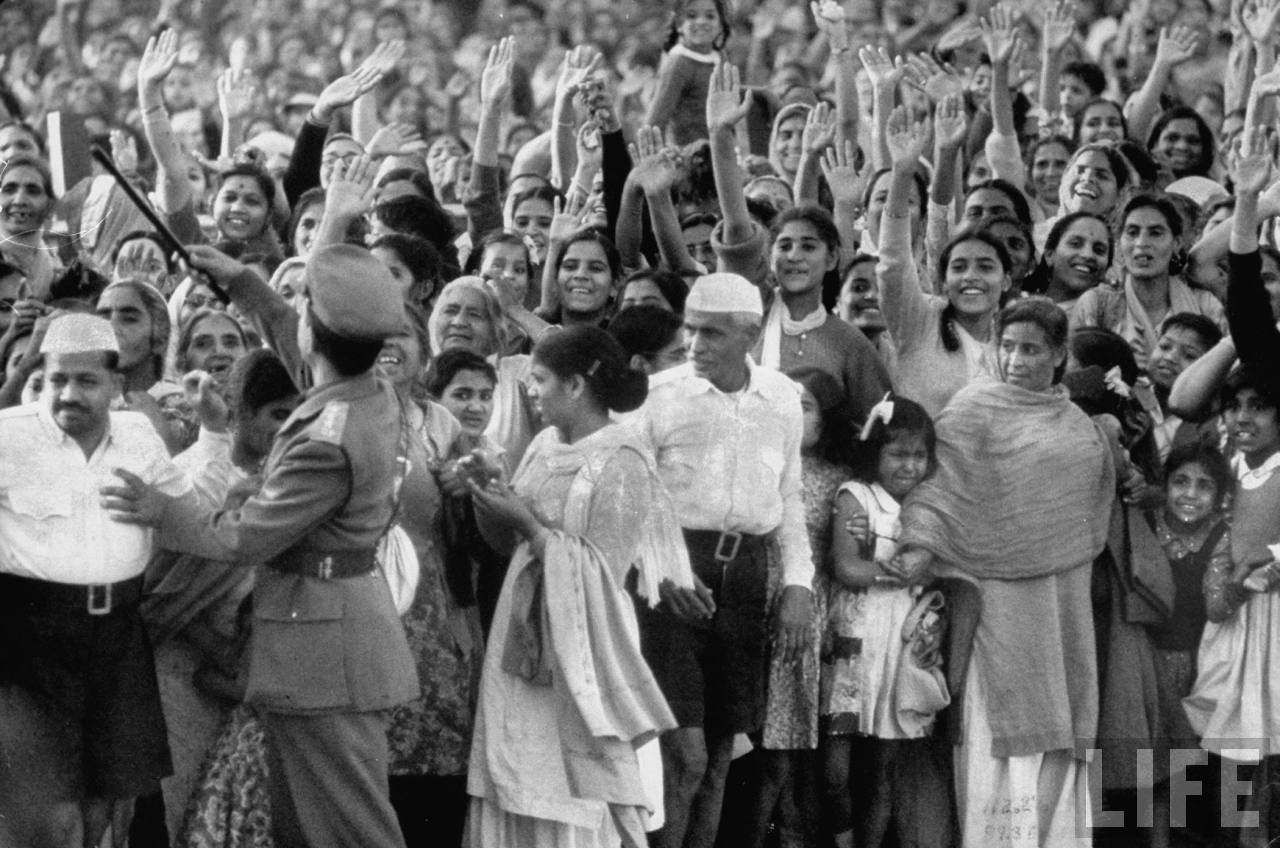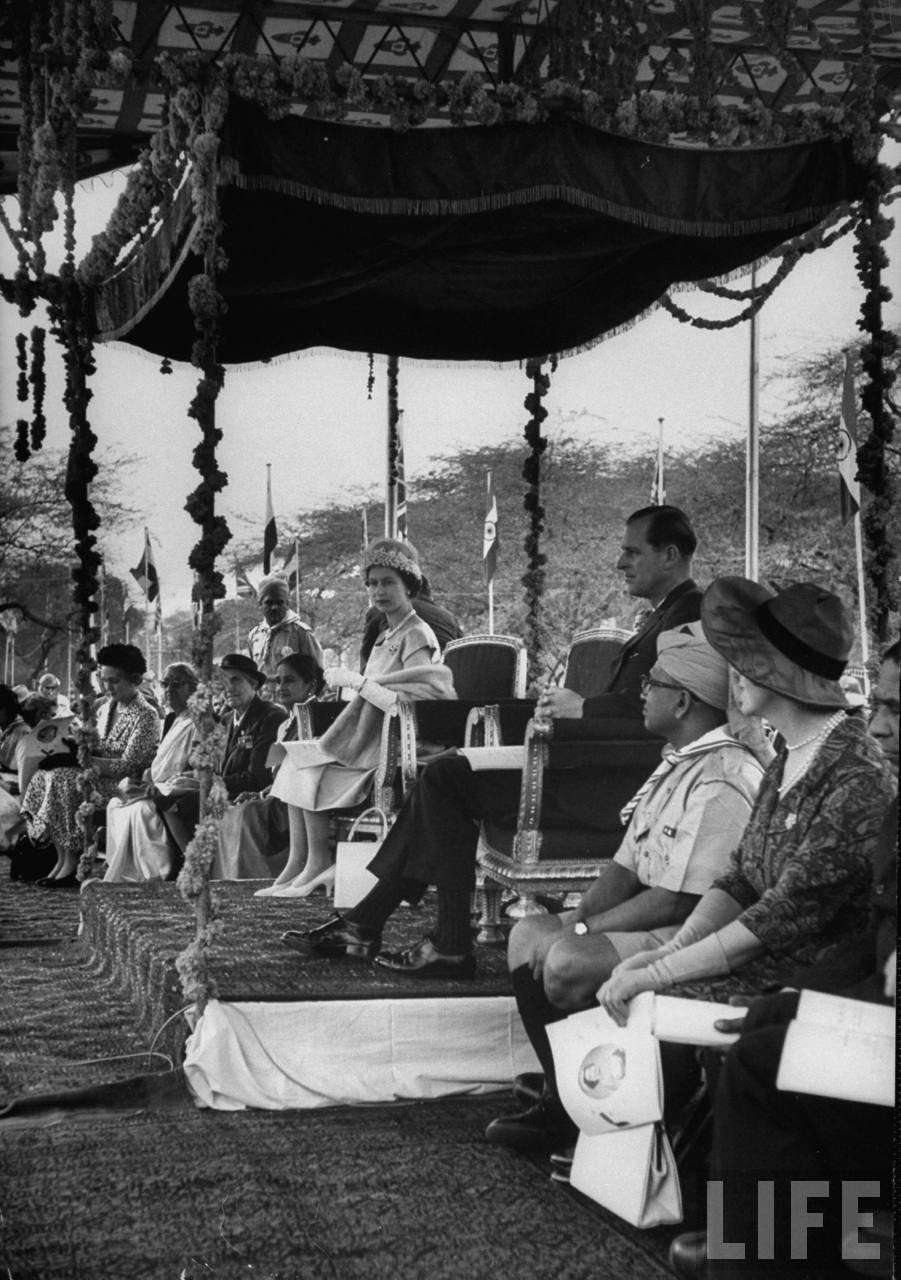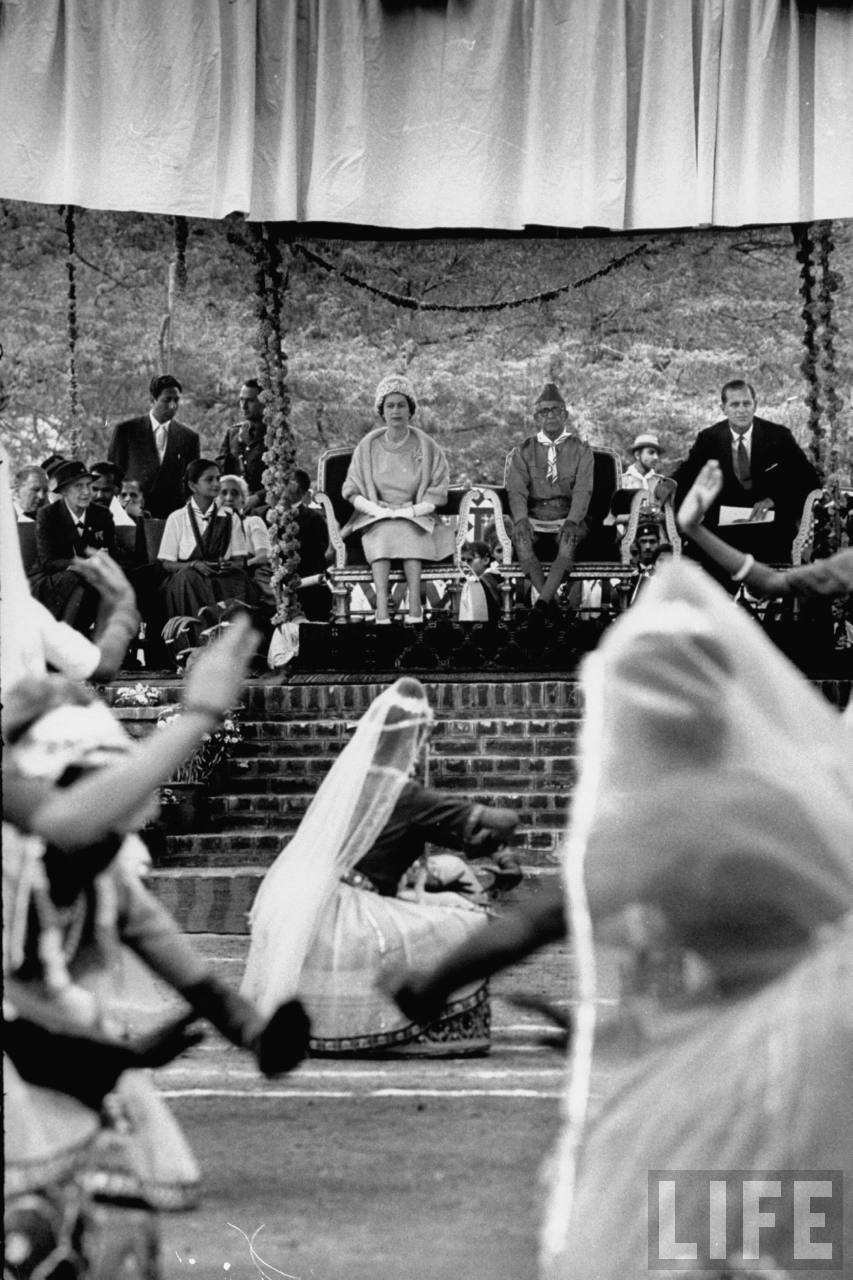They also visited India’s most recognizable monument, the Taj Mahal, and were the guests of honor for India’s Republic Day Parade that year. The first picture shows HM Queen Elizabeth II addressing a crowd of several thousand at Ramlila Grounds between New and Old Delhi. Loudspeakers on stands permeate the sea of faces listening to HM The Queen. Though Britain and the empire emerged victorious from the Second World War, the effects of the conflict were profound, both at home and abroad. The “wind of change” ultimately meant that the British Empire’s days were numbered, and on the whole, Britain adopted a policy of peaceful disengagement from its colonies once stable, non-Communist governments were available to transfer power to. This was in contrast to other European powers such as France and Portugal, which waged costly and ultimately unsuccessful wars to keep their empires intact. Between 1945 and 1965, the number of people under British rule outside the UK itself fell from 700 million to five million, three million of whom were in Hong Kong. From the late 1940s to the mid-1960s, independent India’s most important relationship was with Britain. New Delhi and London had special relations because of common historical ties, political institutions, interest in economic development, high levels of trade between India and Britain, and British investment in India. (Photo credit: LIFE magazine). Notify me of new posts by email.
Δ Subscribe















